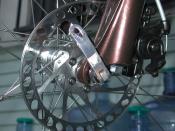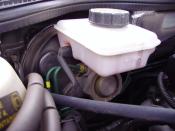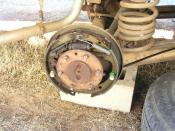HYDRAULIC BRAKES Brake Hydraulic System Principles & Service Tips.
Author/s: Bob Freudenberger Issue: Sept-Oct, 1999 Everyone who works on brakes MUST know these concepts and procedures In the early days of the automobile, some very clever engineering was employed to apply brakes mechanically. For example, the Italian Bugatti routed the cables over the top of the front axle so that the twisting action generated by stopping added force to the shoe cam lever.
No matter how ingenious the design, however, there was always a major drawback: Nothing could insure that braking force would be exactly equal at any pair of wheels, so there was a good chance that stepping on the pedal would cause swerving and skidding. This made the idea of hydraulically actuated brakes attractive--according to Pascal's Law, pressure at all points in a closed hydraulic system must necessarily be the same--but it took many years to develop dependable systems.
The first car of any consequence to carry four-wheel hydraulic brakes was the. 1921 Dusenberg of the U.S.
Basic idea On the most basic level, all brake hydraulic systems share the same principle: Muscle strength amplified by leverage and perhaps a power booster displaces fluid from the master cylinder and causes pressure to increase all through the circuits. This overcomes the retracting springs in drums and the seals' elasticity in disc calipers and pushes the friction material against the rotating member.
That much is obvious, but the subtleties of modern designs that provide proper performance in the real world deserve some explanation. Hence this article, which also includes important service information every mechanic should know about.
Dual master Although it has been in use for decades all over the world, the dual (also called "split" or "tandem") master cylinder is still widely misunderstood, so we had better explain...


